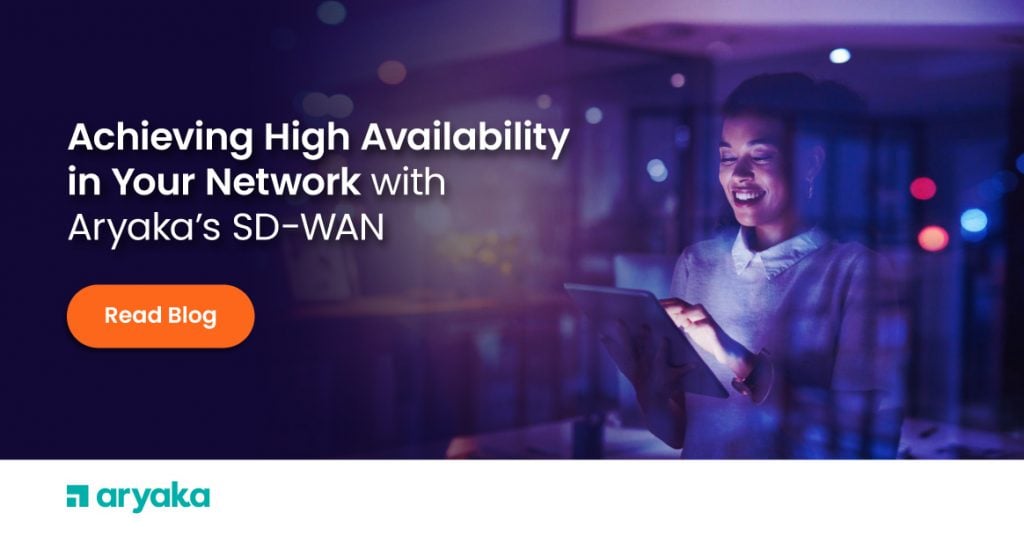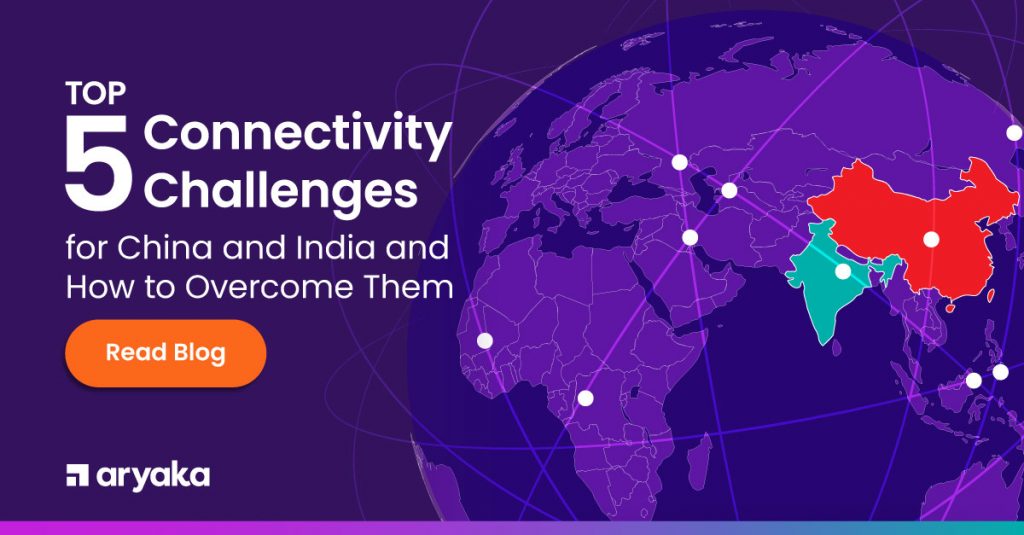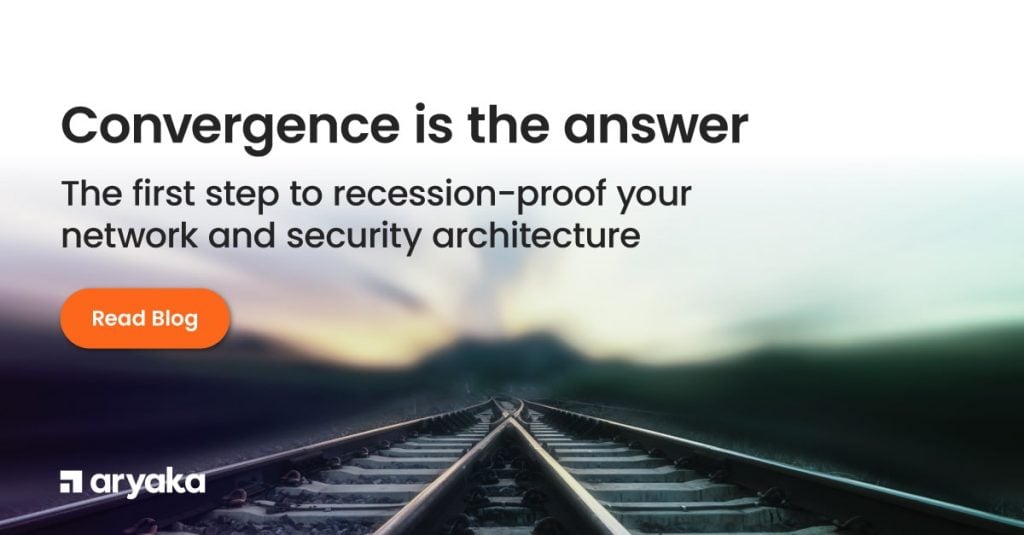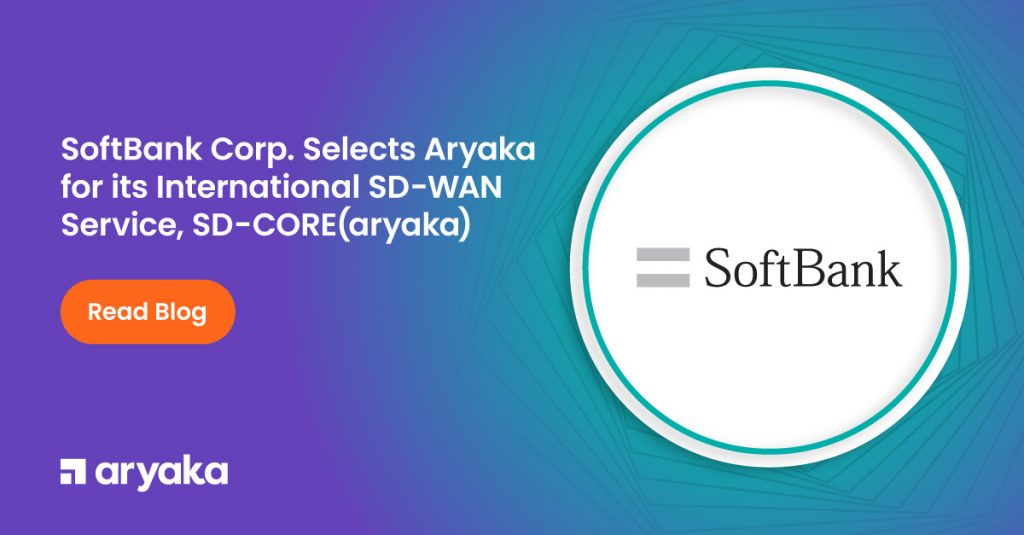The Most Comprehensive Network SLA with End-to-End Coverage

Aryaka, translated from Sanskrit, loosely means “the noble” or “the truthful”. For us, our customers are our truth. The company’s vision and values are fueled by unbridled customer centricity and a passion for going above and beyond. Our Service Level Agreement (SLA) plays an essential role in holding ourselves accountable to our customers to meet or exceed their expectations.
Providing our customers with an experience that is unmatched and simply the best in the managed SD-WAN services industry is what we strive for 24x7x365. To put our money where our mouth is, we have expanded our SLA. It is the most comprehensive and best network SLA offering in the industry and delivers unmatched end-to-end networking coverage in the Managed Services space. I will get into more details later in this blog.
At Aryaka, we are proud to be recognized by our customers and winning industry awards as a trusted and leading managed SD-WAN service. With the expanded SLA offering, we continue to set the pace to provide our customers with the best and verifiable experience possible. Before I get to our newly expanded SLA offering in more detail from the Last Mile, Middle Mile to Edge Services, I want to highlight the importance of an SLA and what to look out for if, in some cases, it sounds too good to be true. As an engineer, I care for numbers and metrics; they matter, and as the sum is greater than its parts, SLA metrics ultimately help to deliver a great customer experience.
Importance of an SLA
Digital Transformation is an integral part of every company’s strategy. At the core of any digital transformation is a high-performance network with predictable connectivity. Customers want to know that they can rely on a vendor’s service and expect that a vendor stands behind its promise so that they can deliver on theirs. In short, they want one less thing to worry about.
A performance-based SLA is a great vehicle to communicate expectations and creates a level of trust by clearly stating what to expect, the conditions, and what the penalties are when a vendor fails to live up to its promise.
A good SLA addresses five key aspects:
- What is the provider promising with no caveats? No fine print or if’s and but’s!
- How does the provider measure delivery and downtime?
- What happens if the provider fails to deliver as promised, and what is the price of non-conformance?
- How fine-tuned is the SLA range? Does the vendor have a sliding scale of 5 nines to 4 nines to 3 nines, and when does it apply?
- Does the provider offer itself SLA reports without hesitation, or is the customer made to jump through hoops to provide proof of a violation?
Too good to be true? What to look out for in an SLA
SLAs have earned a reputation of using crafty wording that sounds good but doesn’t back up its claim to customers when it matters to deliver on the service’s promise. Let’s look at some of the language tricks that service providers do in SLAs. These are well-crafted so that customers often can’t claim an SLA violation. For example:
- SLA Downtime Measurement: Most providers don’t mention the fact that their polling cycles are neither constant nor instant. Realistic polling intervals sit at around 1-2 minutes for “ping” type checks, and 5 minutes for data collection. But if I’m only checking the status of a router/circuit every minute, the reality is that I won’t be cutting a ticket for a “down” device for 3-5 minutes. So, while the SLA may state 5-9′s, the way uptime is measured blows the claim out of the water right there. Any provider who claims a high SLA needs to provide a polling mechanism that has the granularity of measuring downtime in seconds. Pay equal attention to the formula used on how to measure the SLA: look for seconds instead of minutes as a unit. If you don’t see seconds mentioned clearly in the SLA measurement, then this is your clue that the vendor is crafty with words but not so much when it comes to upholding their end of the commitment. To illustrate this crucial point, consider that a provider may have service down for 35 seconds in every minute (more than 50%), but since he measures the SLA in minutes, it will show that the service is up and no violation occurred.
- SLA Credit/Penalty: The penalty the provider pays when they miss their SLA should be significant. Why? It means loss of productivity and business. A provider should have skin in the game, not just paying lip service. If the penalty is low, this probably means the SLA claim is too good to be true. For example, if a provider claims 5 nines and then offers 2% of your daily circuit fees (not a large amount for the service provider overall), the 5 nines are probably meant to give you a false sense of reliable performance. At the same time, a violation does not cost him much. Make sure the provider shares the pain and pays you as much revenue as you are losing. Otherwise, it is easy (and “free”) for a provider to claim any SLA number, even if it is 100%. The least you can do is to put a clause in the agreement that allows you to break the contract with your provider if the provider misses the SLA a certain number of times. That is one way to ensure the provider take his claims seriously to earn your business and meet your expectations.
- SLA Granularity and Ranges: In many SLA agreements, I see providers lead with claims of high SLA numbers and mention only 5 9’s. But when checking the actual SLA document or MSA agreement, they list a considerable range of SLA numbers that do not provide any real value to the customer. For example, here is an SLA range offered that can be found in another SD-WAN provider’s documentation, that I shall not name here:
- Availability > 97.9% but < 99.999%. The Credit Amount of Monthly Fee for Affected Seats is 5%.
- So, the vendor is offering a range of 2.1% difference in SLA for a 5% credit. This provider offers an SLA range from 99.999%, which corresponds to 30 seconds of downtime per month, to 97.9%, which corresponds to 15 hours of downtime per month. The same credit for 30 seconds or 15 hours of downtime; let that sink in for a moment!
- This extensive range is clearly saying one thing – albeit kind of silently, as one needs to read the details in the document – you are pretty much left holding the bag when it comes to reliable network connectivity and performance. The louder marketing claim of 5 nines is too good to be true.
- Wouldn’t you agree that if a provider cannot meet 5 9’s, then the next level should be 4 9’s, then 3 9’s, and so on until you reach 97.9%? Just imagine if your service is down for 15 hours, which is equivalent to 2000 times of 5 nines SLA real downtime, and the loss of productivity and revenue that comes with such a prolonged downtime. And all you are getting is a few dollars (5% of circuit value per day) as compensation.
- SLA Visibility and Reports: Most service providers require customers to do the heavy lifting of measuring the circuit and service performance, then providing data back to the service provider to prove that an SLA violation happened. Customers typically don’t want to go through this hassle or purchase additional tools that can do 24×7 circuit and service monitoring. I think Service Providers should provide the data in real-time to customers without any hassle. Of course, this is difficult for service providers that don’t measure uptime themselves, or they do measure it, but the results are not in their favor, and rather not share it unless they have to. Customers should always demand real-time reports to validate that the service they are getting meets the SLA promised.
Aryaka’s Approach to SLA
At Aryaka, we believe in providing a credible and verifiable SLA. Being truthful – this means we meet our SLA – and we often beat it. We have the data to prove it and the reports to back it up. We provide real-time visibility to our customers from the MyAryaka cloud portal.
But we go beyond the SLA numbers and focus and care deeply about overall customer satisfaction. We don’t burden our customers by asking them to collect data and to do their own measurements. Instead, we do it as part of our managed service and provide data for every site connected to our global core network and show uptime, latency, jitter, and packet loss.
In the figure below, you see an example of the Aryaka SLA Dashboard. The first screenshot shows a list of all sites that are connected to the Aryaka Layer 2 Core Network. The first column has the site names, and the second to fifth columns have the number of times where an uptime, latency, loss, and jitter SLA violation occurred. In the example below, a customer can see that the Bangalore site had two loss violations.
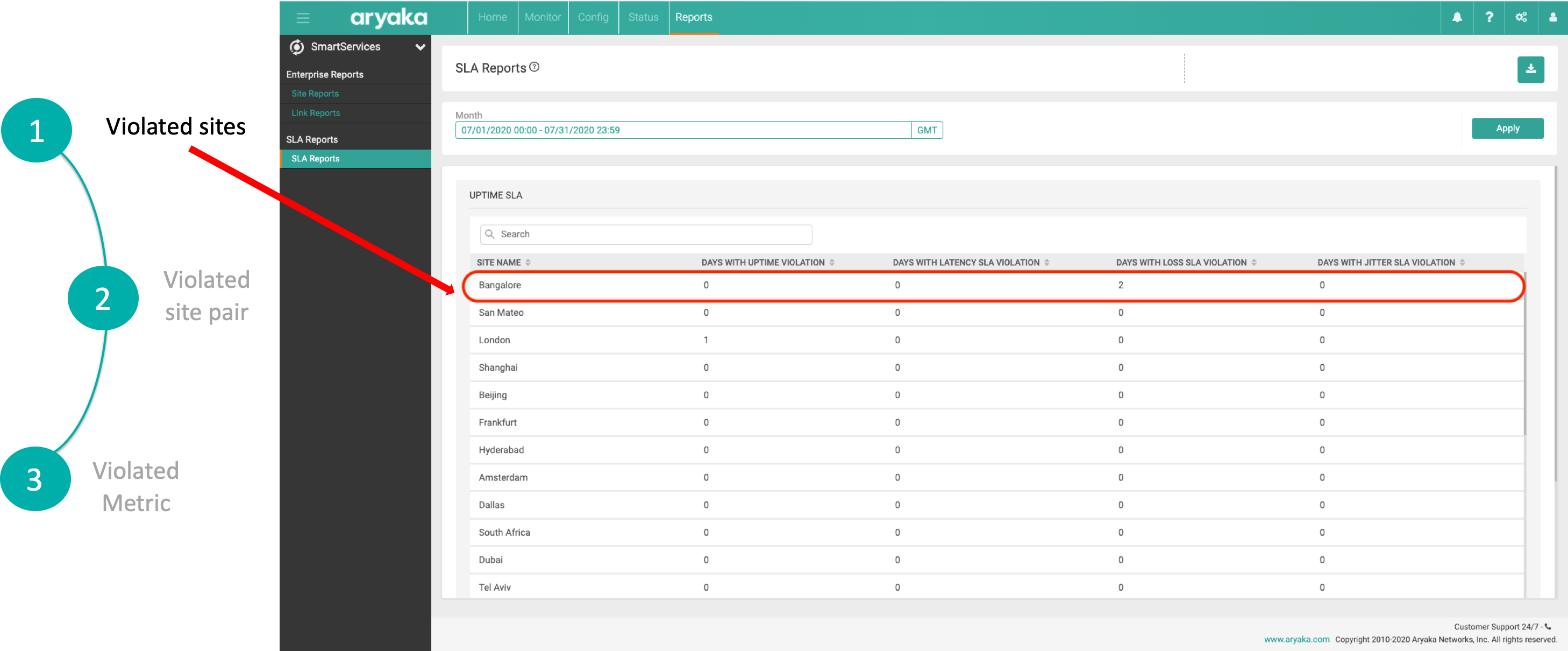
A customer can drill down further and get more details by clicking on the highlighted row. Once clicked on it, a customer will see all the sites connected to the Bangalore site (full VPN mesh) and get to see which site pair had the exact same loss violations. In the example below, we see the two violations that happened between the Bangalore and San Mateo sites.
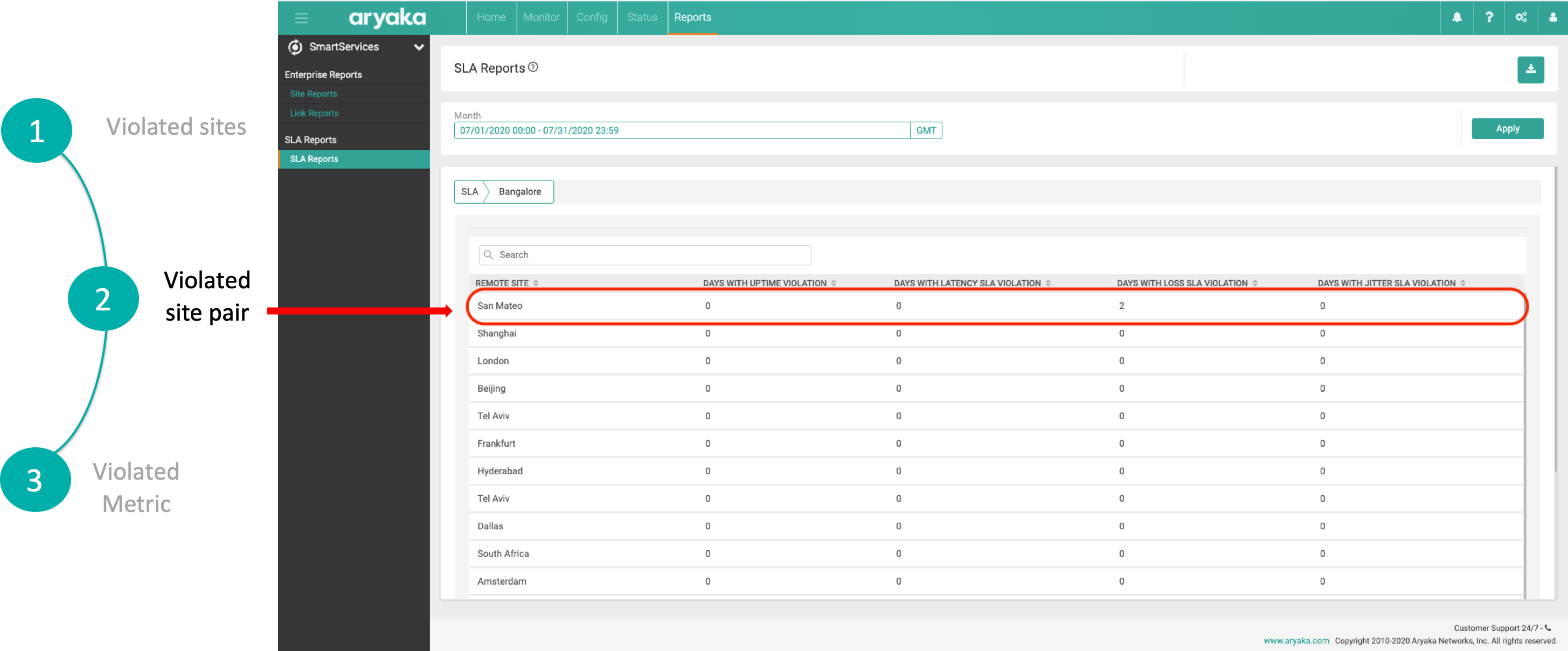
By clicking on the highlighted row, a customer can drill down to even more granular insights, and get to see the exact date and violation details, clearly marked in red.
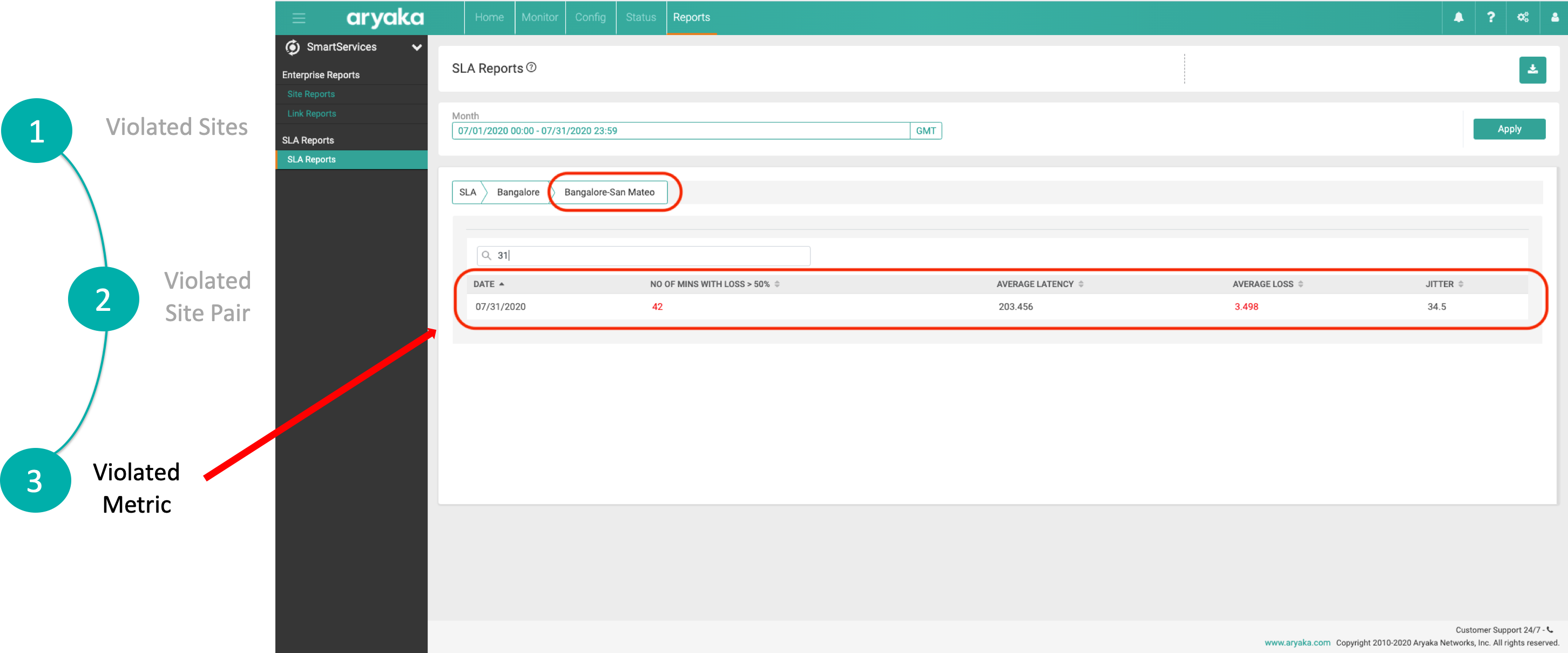
Expanded Aryaka SLA Offering
As a global managed service, we have focused on providing our customers with a single point of contact for their networking needs and providing a great customer experience. Our industry-leading Net Promoter Score with 65+ as well as recognition as a Gartner Peer Insights Customer Choice recipient is a testament to this goal. We use this recognition not only to stay true to our values and expand on it to provide an unmatched end-to-end networking customer experience.
Aryaka offers the most comprehensive SLA offering in the industry with
- One global SLA, regardless of a customer’s site location
- Day 1 SLA – All Services are offered from Day 1
- Enhanced: Up to 5 nines Uptime for the Aryaka Middle Mile, our Layer 2 Core Network
- New: Up to 4 nines end-to-end Uptime: Last Mile, Middle Mile, and Edge Services
- New: Last Mile SLA with committed delivery time from Aryaka
- New: Edge Services SLA that include Aryaka services, i.e., managed and hosted Firewall SLA
- New: SLA reports available in MyAryaka Cloud Portal

To learn more about the Aryaka SLA and discussion, join me on September 10 for a Live Webinar: Network SLAs for the Cloud-First Era with Steve Garson from SD-WAN Experts, Aryaka CTO, and founder Ashwath Nagaraj and Aryaka VP of Product Solutions Marketing Dave Ginsburg.
Additional Resources
Strategic Roadmap for Enterprise Networking
Our Customers Come First/Net Promoter Score
- Accelerate CAD/CAM Performance
- Improve Zoom Conferencing Performance
- Calypso Embraces a SaaS-first Strategy
- CallisonRTKL Transforms their WAN
- Kleinfelder Improves Application Performance
- Teradyne Transforms their WAN
- SAP web application performance
- Kleinfelder Improves Application Performance
- Industrial Manufacturing Company Transforms WAN




